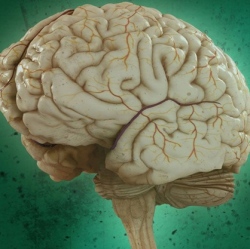
A 15-year-old British boy has developed a potential test for Alzheimer’s disease which could allow the condition to be diagnosed 10 years before the first symptoms appear. Currently Alzheimer’s can only be detected through a series of cognitive tests or by looking at the brain after death.
But Krtin Nithiyanandam, of Epsom, Surrey, has developed a ‘trojan horse’ antibody which can penetrate the brain and attach to neurotoxic proteins which are present in the very first stages of the disease. The antibodies, which would be injected into the bloodstream are also attached to fluorescent particles which can then be picked up on a brain scan.
Krtin submitted his test to the Google Science Fair Prize and learned that he had made it through to the final last week. He will find out next month if he has won a prestigious scholarship and mentoring to take his idea further.
“The main benefits of my test are that it could be used to diagnose Alzheimer’s disease before symptoms start to show by focusing on pathophysiological changes, some of which can occur a decade before symptoms are prevalent,” Krtin told The Daily Telegraph.
“This early diagnosis could help families prepare for the future and ensure that existing drugs are used to better effect. “Another benefit is that due to the conjugated fluorescent nanoparticles, my diagnostic-probe can be used to image Alzheimer’s disease non-invasively.”
Neurodegenerative disease like dementia are so hard to diagnose and treat because of the blood-brain barrier, an extra later of cellular material which surrounds blood vessels in the brain, and refuses to let anything through that is absolutely essential.
But Krtin’s antibodies can pass through that barrier. Latest lab tests even show that they ‘handcuff’ the toxic proteins, stopping them from developing further which could potentially stop Alzhiemer’s in its tracks
There are 850,000 people currently suffering from dementia in the UK, with Alzheimer’s disease being the most common type. The disease kills at least 60,000 people each year.
